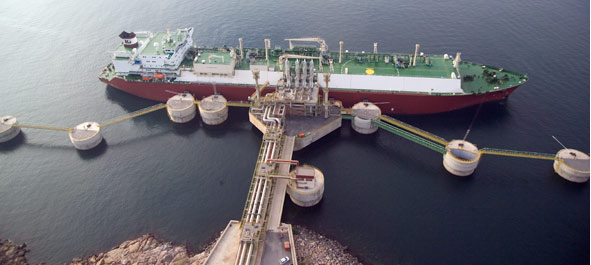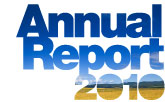No problems in Europe’s gas supply were recorded in 2010. However, in late June, gas payments and transit rights created tension between Belarus and Russia. The positive attitude of both sides and the EC’s deft response in the face of high-risk situations aborted the dispute in a matter of days.
In April, Russia and the Ukraine signed an agreement concerning the pricing and transit fees of natural gas headed for Central Europe.
The Ukraine’s political change and an agreement linked to the Russian Fleet remaining in the Crimean Peninsula favoured this interaction, lending the governments and consumers from countries which experienced problems in 2009 increased peace of mind.
The European gas supply was composed as follows: 51% for marketed production, including Norway, 23% for imports from Russia, 10% for imports from Algeria, 6% for imports from Qatar, 3% for imports from Nigeria, 7% for other sources (Libya, Trinidad & Tobago, Egypt, Peru, Middle East and Central Asia).
By mid November, half the Nord Stream gas pipeline in the Baltic Sea had been completed. Over 600km of this gas pipeline, which runs along the sea floor and will carry Russian natural gas into the heart of the EU, had been constructed. Gas will most likely reach Germany in late 2011.
Other significant agreements include those signed by RasGas and Distrigas in March 2007, wholly associated with the price established by the Zeebrugge Hub. In April 2010, the Russian company Gazprom, pressured by falling demand, agreed, in order to establish the price, to index part of the gas pipeline supply (long term contract) to Germany, France and Italy using reference values from the spot market.
The second and final stage of the Open Season 2015 process between Spain and France ended on 16 July. Consequently, the Irun/Biriatou international connection, in the Spain to France direction, will have the capacity to transport 2 bcm/year, available in 2015. Coupled with the Larrau connection’s 5.5 bcm/year bi-directional transmission capacity, which will become available in 2013, capacity will reach 7.5 bcm over the course of 2015.
- Norway
- Russian Fed.
- Algeria
- Libya
- Oman
- Qatar
- Egypt
- Nigeria
- Trinidad & Tobago
- Equatorial Guinea
- Others
- TOTAL
- Distribution
- 95,63
- 112,37
- 30,02
- 9,17
- 0,00
- 0,00
- 0,00
- 0,00
- 0,00
- 0,00
- 2,00
- 249,19
- 79,8%
- 2,25
- 0,00
- 16,46
- 0,72
- 1,28
- 18,48
- 6,58
- 9,56
- 7,47
- 0,17
- 0,25
- 63,22
- 20,2%
- 97,88
- 112,37
- 46,48
- 9,89
- 1,28
- 18,48
- 6,58
- 9,56
- 7,47
- 0,17
- 2,25
- 312,41
- 100,0%




